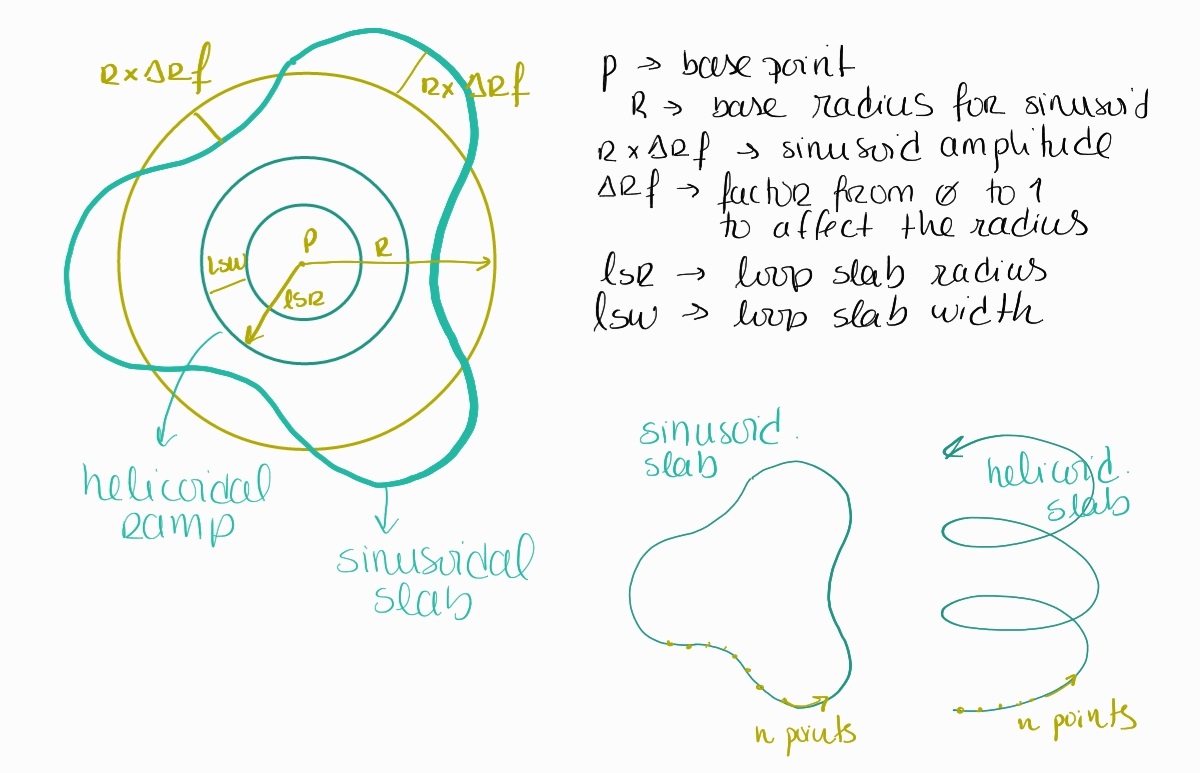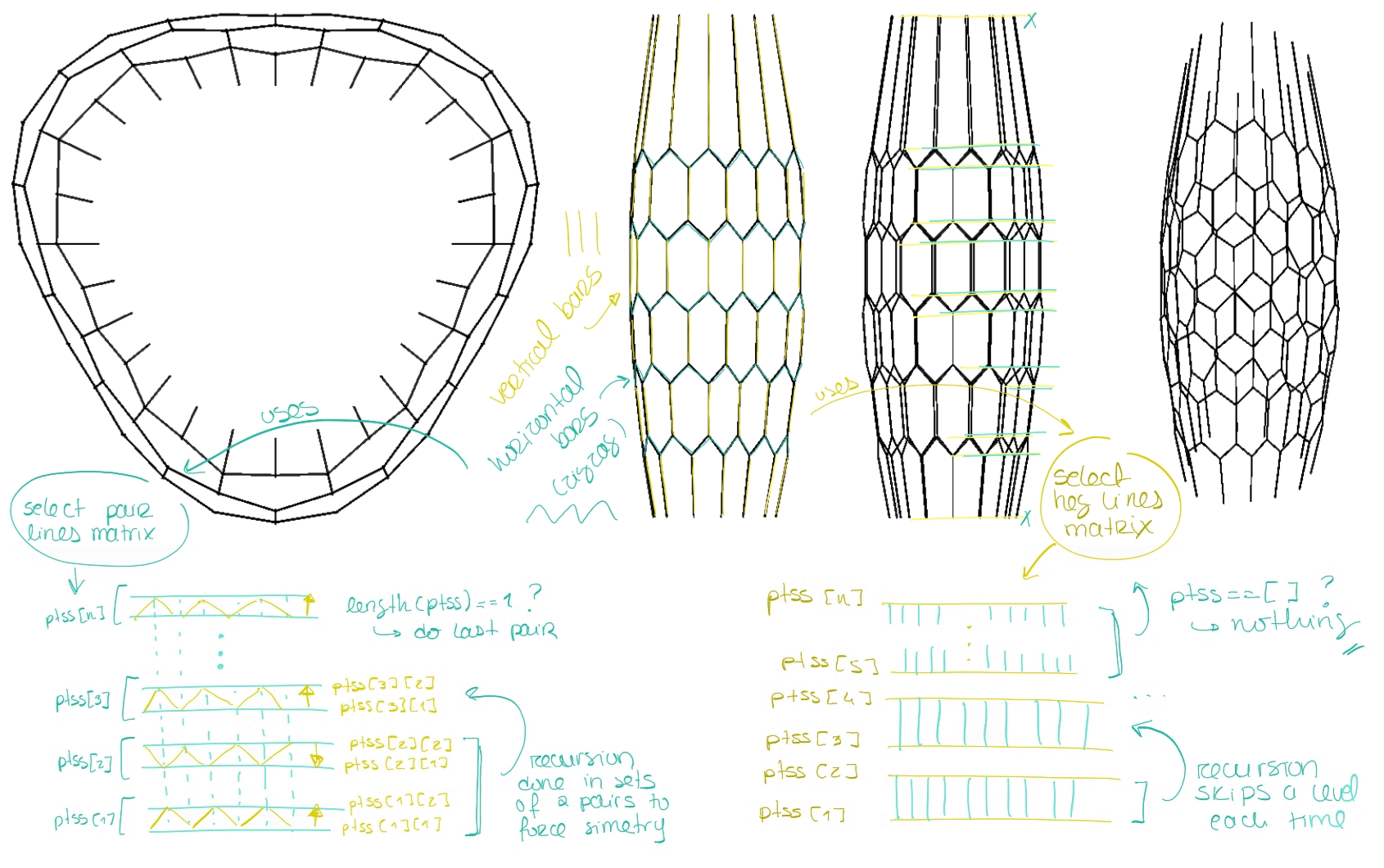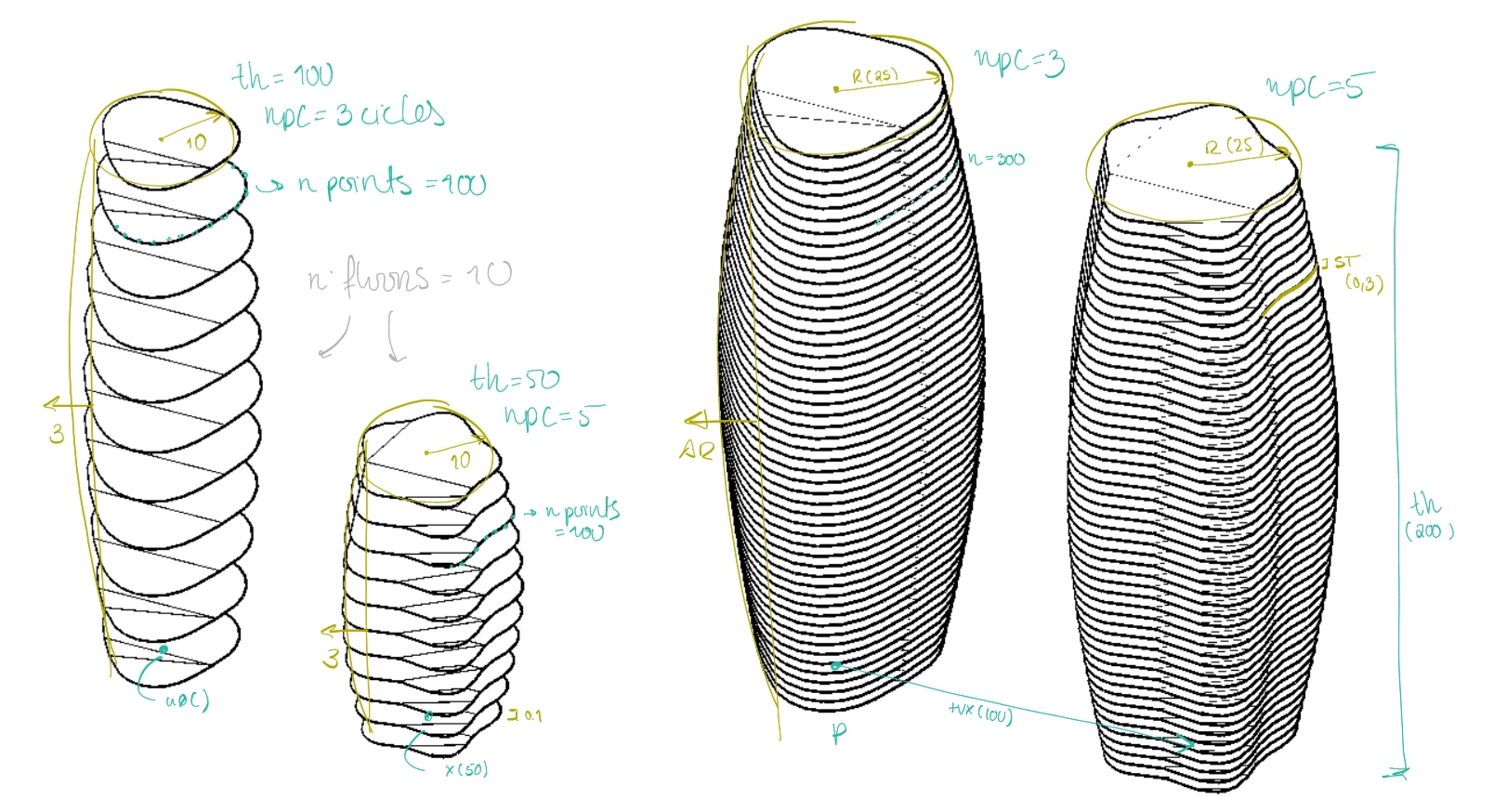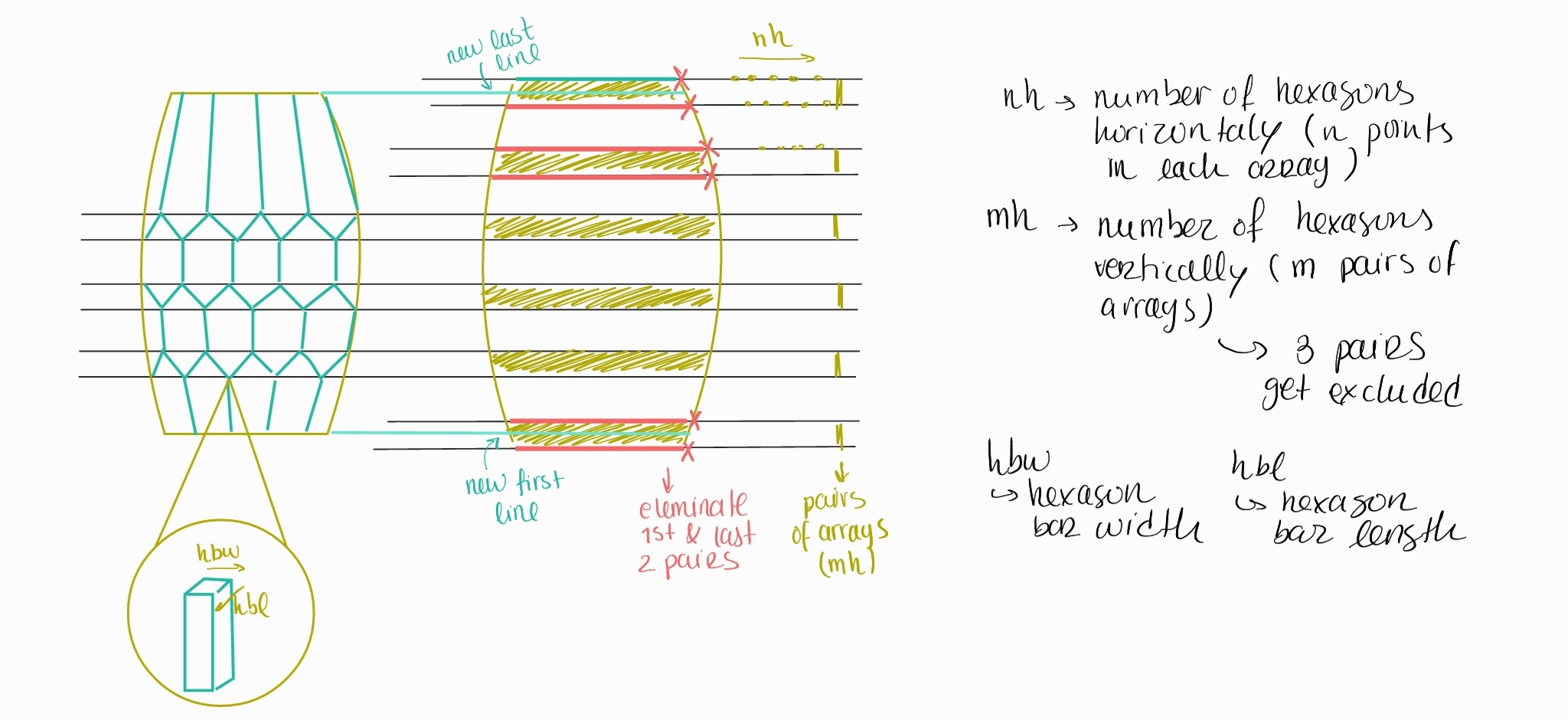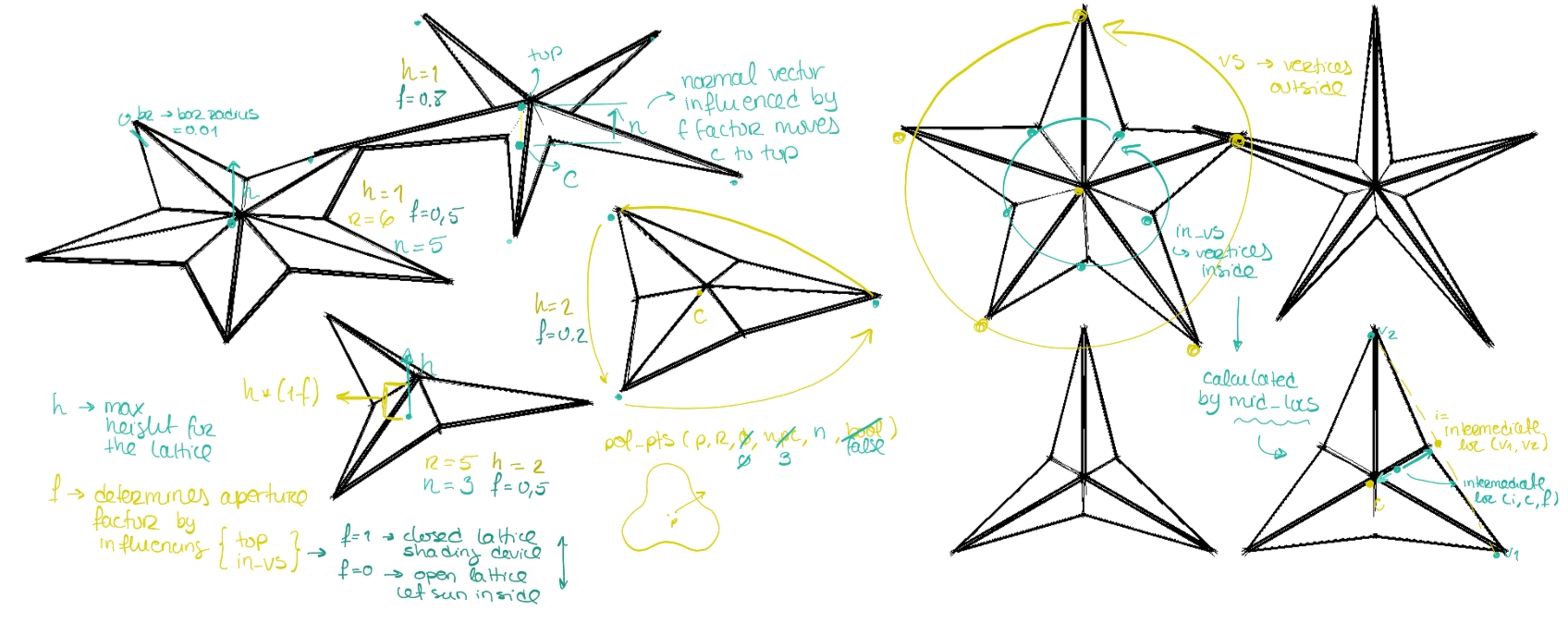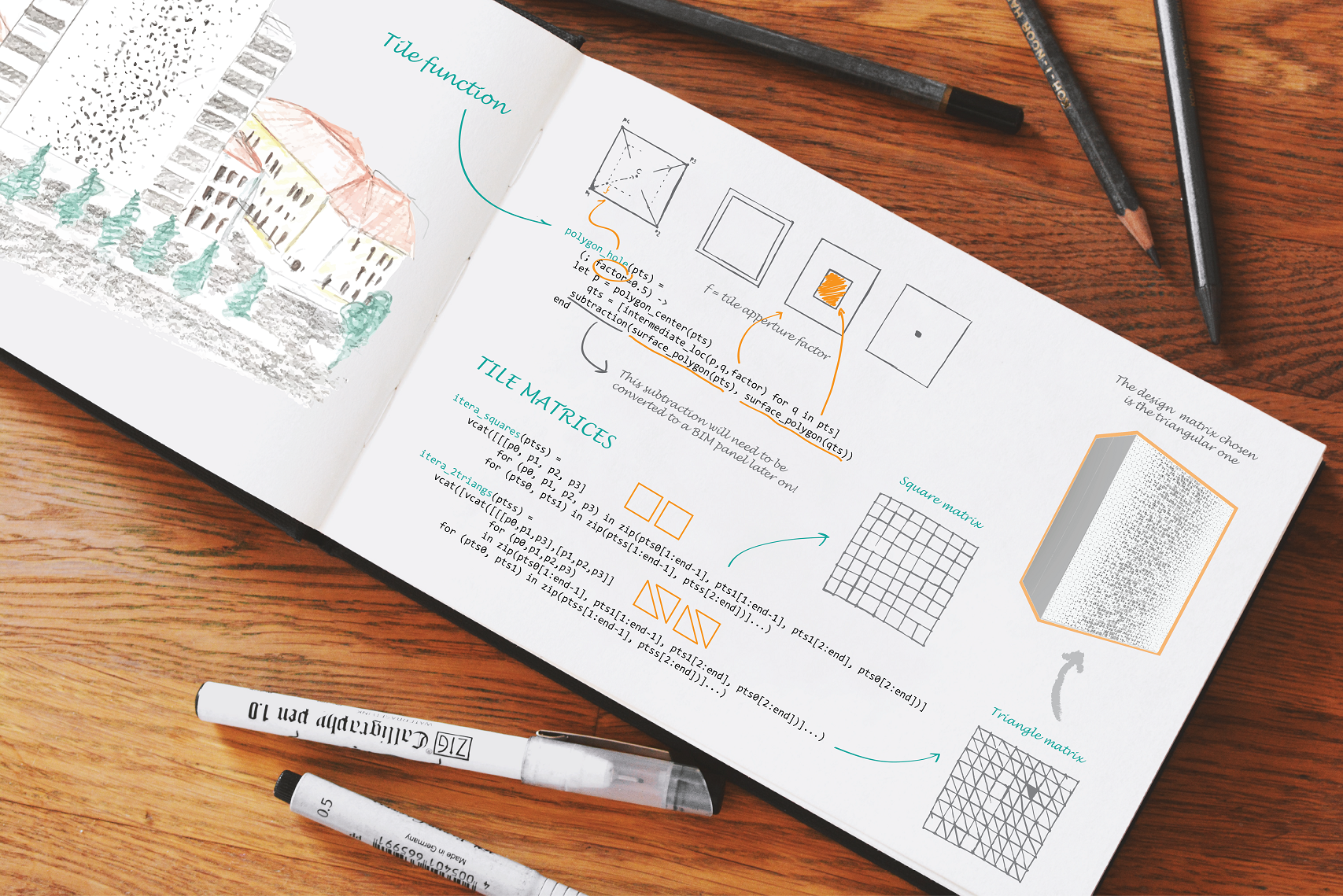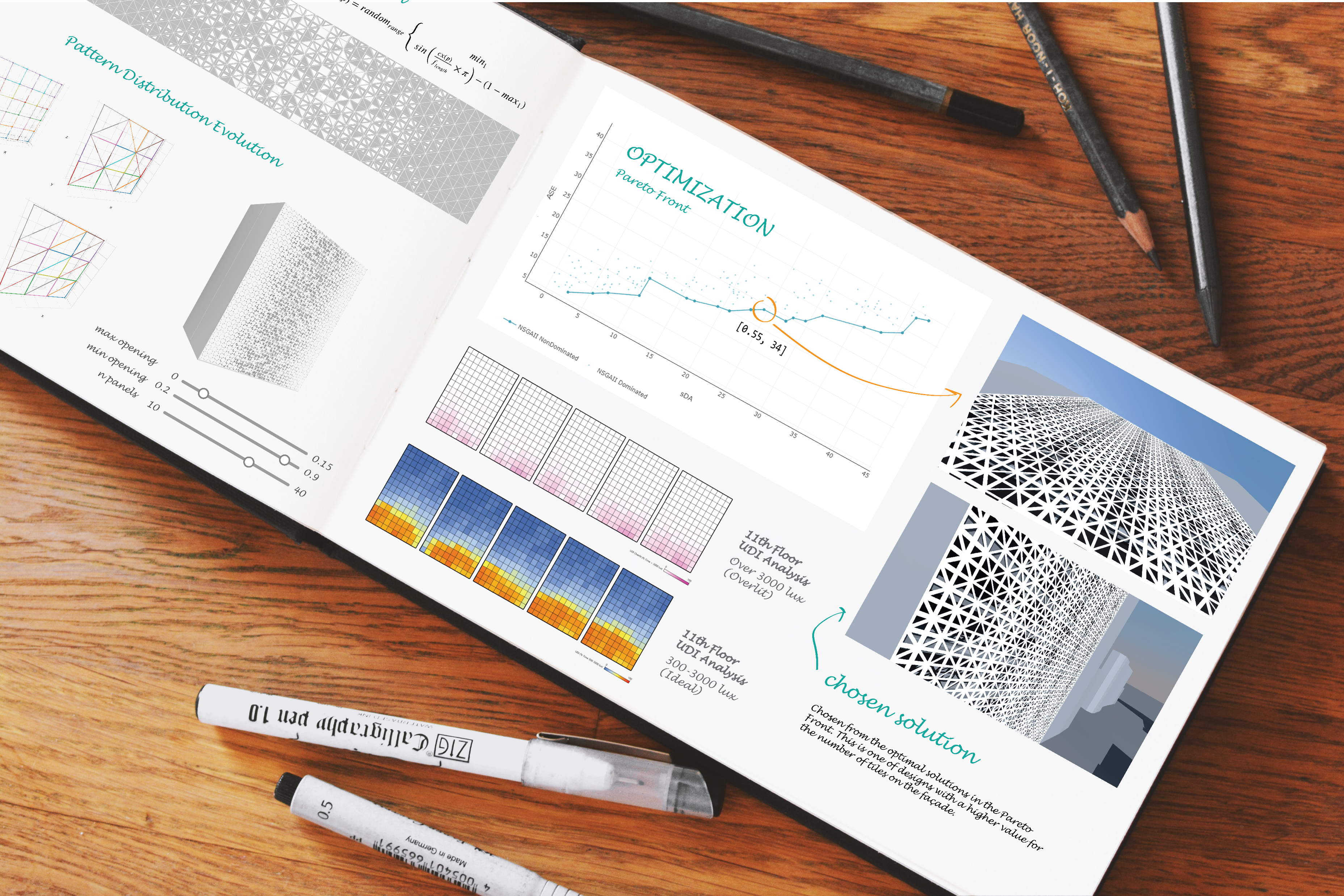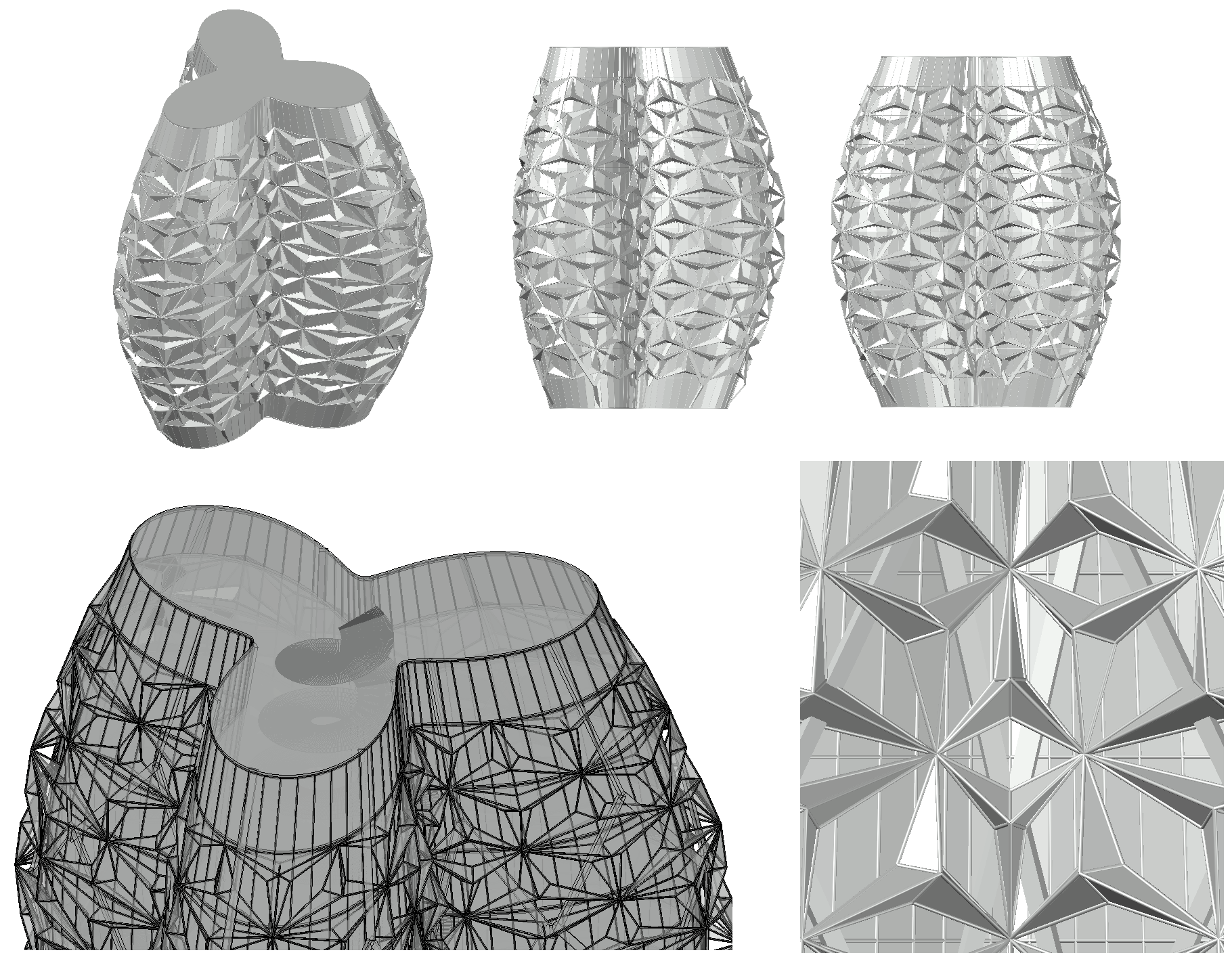Al Bahar Towers
Original project: Project from Aedas Architects
Programming Language: Julia
Algorithmic Design Tool: Khepri
Programming Environment: Pluto

The Al-Bahar towers in Abu Dhabi (UAE) have one of the largest and
most advanced interactive façade sun-shading skin system. The two
25-storey office towers have a cylindrical form that maximizes the
floor-to-wall area and views. However, this also exposes the
interior to high solar gains. The adaptation to the local climate
thus resulted in a shading system inspired on islamic geometric
mosaics that reduced heat gains and glare. A reinterpretation of
the traditional wood-lattice screens (mashrabiya) resulted in the
use of 1000 reactive panels that open and close in accordance with
the position of the sun.
The Al Bahar AD program is here presented and explained in a Pluto notebook,
embodying the Algorithmic Design (AD) Sketchbook concept: a design
environment that allows for the creation of algorithmic descriptions in
an incremental and documented way.
AD Sketchbook
While in many endeavors the final product is the one thing that matters, in a
creative process, the narrative of how we got to the final design is
just as important to comprehend it as the design itself. The traditional
sketchbook typically used by designers during their creative process
stands as proof to this. This creative journal gathers a narrative of
the design's evolution based on drawings, schemes, and textual
descriptions, helping designers remember, summarize, or even reuse
design ideas.
The AD Sketchbook proposes carrying this concept over to AD,
creating a design environment for AD inspired by the designer's
sketchbook.

The computational equivalent of a designer's sketchbook
should not only make the AD process more akin to the typical design
process, but also facilitate later comprehension and reuse of
algorithmic descriptions, which is particularly beneficial for
collaborative work scenarios, where the person trying to decipher the AD
project is rarely its creator. Finally, it should support exploration
and explanation, two fundamental aspects of the development of any
design project. In this sense, the computational sketchbook should
function as an executable depiction of the creator's ideas, a design
narrative explained in a visual and understandable manner for the author
and others, with the added interactiveness that comes with the digital
medium.
Unfortunately, the currently available technology is not yet able to
convey the interactivity of the digital medium to a physical
sketchbook. The closest alternative would be digital notepads, which
do not yet provide the physical sensations of drawing on a
sketchbook. Hence, this investigation opts for a fully digital
solution, using computation notebooks as the starting point for the design
environment.
